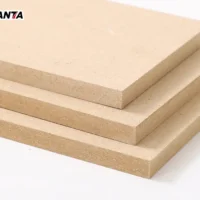1. What Is Plywood?
Plywood is a composite panel made by pressing multiple layers of wood veneers together, with each layer’s grain direction perpendicular to the next. The layers are bonded using adhesives under heat and pressure.
Key Features of Plywood:
- Good dimensional stability and flatness
- Strong resistance to warping
- Moderate water resistance
- Easy to cut, drill, or slot
- Commonly used in furniture, flooring, cabinets, and interior walls
2. What Is a Multilayer Board?
Multilayer board (also sometimes referred to as multi-ply board) is made using multiple layers of wood sheets, often arranged with interlocking or sawtooth joints between layers. These are then glued and pressed together to form a denser, more solid board.
Key Features of Multilayer Board:
- Higher density and durability
- Slightly better impact resistance
- Often has a smoother finish
- Designed for structural strength and moisture resistance
- Suitable for kitchens, bathrooms, basements, or areas with higher humidity
3. Key Differences Between Plywood and Multilayer Board
Here’s a simplified comparison of their most important characteristics:
| Feature | Plywood | Multilayer Board |
|---|---|---|
| Structure | Cross-laminated wood veneers | Densely stacked sheets, often sawtooth joined |
| Density | Moderate | Higher |
| Strength | High bending strength | High compression strength |
| Water Resistance | Good, especially with WBP glue | Generally better in moisture-prone areas |
| Ease of Processing | Easy to cut and shape | Slightly harder to process due to density |
| Durability | Good for most indoor uses | Excellent; more wear-resistant |
| Flame Resistance | Not flame-resistant | Also flammable; both need treatment in high-risk areas |
| Applications | Furniture, cabinetry, wall panels | Wet-area interiors, load-bearing furniture parts |
4. Pros and Cons of Each Material
📌 Plywood:
Advantages:
- Lightweight and easy to install
- Versatile for many applications
- Affordable and widely available
Disadvantages:
- May deform in high humidity
- Surface may chip or delaminate if not treated
- Not impact- or fire-resistant unless modified
📌 Multilayer Board:
Advantages:
- Higher durability and structural integrity
- Better moisture resistance
- Stronger under pressure and weather conditions
Disadvantages:
- Heavier and more difficult to install
- More expensive
- Still flammable if not treated
5. Which One Should You Choose?
The choice between plywood and multilayer board depends on your specific project needs:
- For lightweight furniture, cost-efficiency, or ease of handling, plywood is a reliable choice.
- For moist environments, load-bearing applications, or higher durability, multilayer board offers better performance.
If you’re working in kitchens, bathrooms, or areas with frequent humidity and wear, multilayer boards may outperform standard plywood. However, for decorative wall panels or budget-conscious projects, plywood remains the go-to material.
















